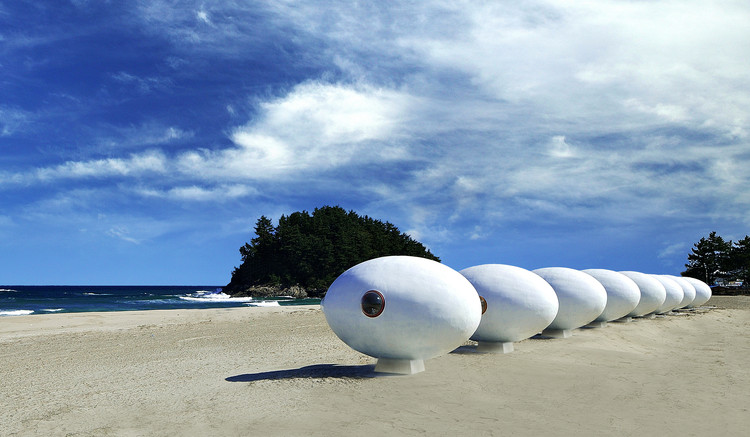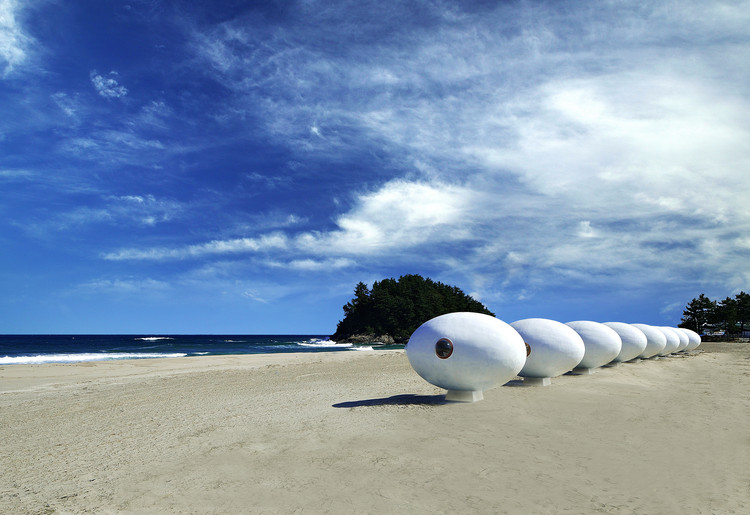
It’s a beach shelter like you have never seen before: meet Albang, the relaxation pod of the future, an oval space with a flexible interior plan optimized for sleeping, socializing, or relaxing. In Albang, located in Gangwon-do province on South Korea's coastline, aerodynamics, vivid colour, and clever design meet minimalist futuristic architecture. Realized by Korean firm Yoon Space Design, Albang was designed to replace traditional means of temporary habitation, blending the functionality of pod hotels with the efficiency of a simple tent for camping.
Enter Albang's flexible and colourful ovoid pods after the break

Inspired by a desire to create "memorable travel in a unique place," the team conceived of a community of pods to provide shelter and relaxation on the busy beach. Seeking to foster a stronger connection between people and place, and focusing on increasing the element of serenity to produce a truly relaxing and enjoyable experience for visitors, the designers set about to create a minimalist hub for activity with applicability in a variety of locations.

From outside, the colourful hydraulic doors of the eight eggs of Albang act to differentiate one from the next while creating a port of entry to the mobile hut. Inside, white walls contrast colourful floors punctuated by serene views from the pod's two modest porthole windows. Interior spaces measuring exactly two square metres provide a unusual challenge for use, allowing just enough room for sleeping but not enough space to stand.

Composed of environmentally conscious materials and assembled by hand, the team at Yoon Space Design aimed to create a comfortable all-season space for relaxation. The skin of the pods is constructed from expanded polystyrene, simultaneously providing insulation and waterproofing qualities while maintaining the pod's lightweight mobility. The material lends itself to fireproofing and seismic protection in earthquake-prone South Korea, additionally serving as a heat trap through its natural convection process.

Yoon Space Design intends to expand the pod into further exotic locations to provide refuge for travels in unexpected places, having patented the design with the intention to produce more pods for use beyond the project's current beachfront confines.
Architects
Location
Seoul, South KoreaArchitects
Seokmin Yoon & Song PyoungConstruction
Song PyoungArea
6.9 sqmProject Year
2014Photographs
Gimyoun SongLocation
Seoul, South KoreaProject Year
2014Photographs
Gimyoun SongArea
6.9 m2






